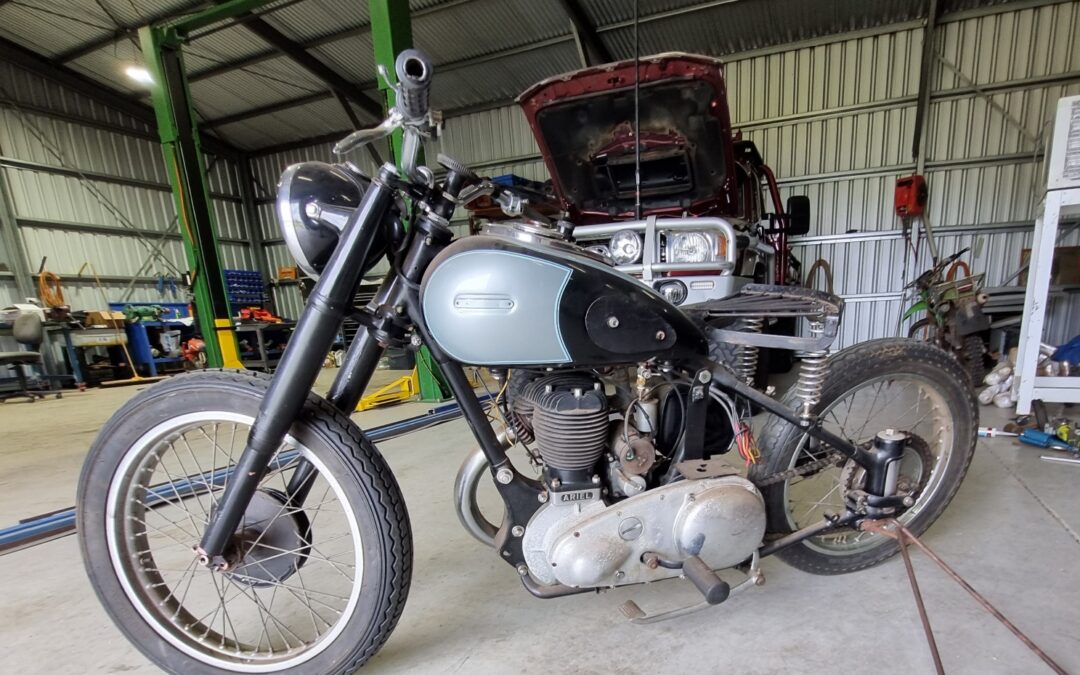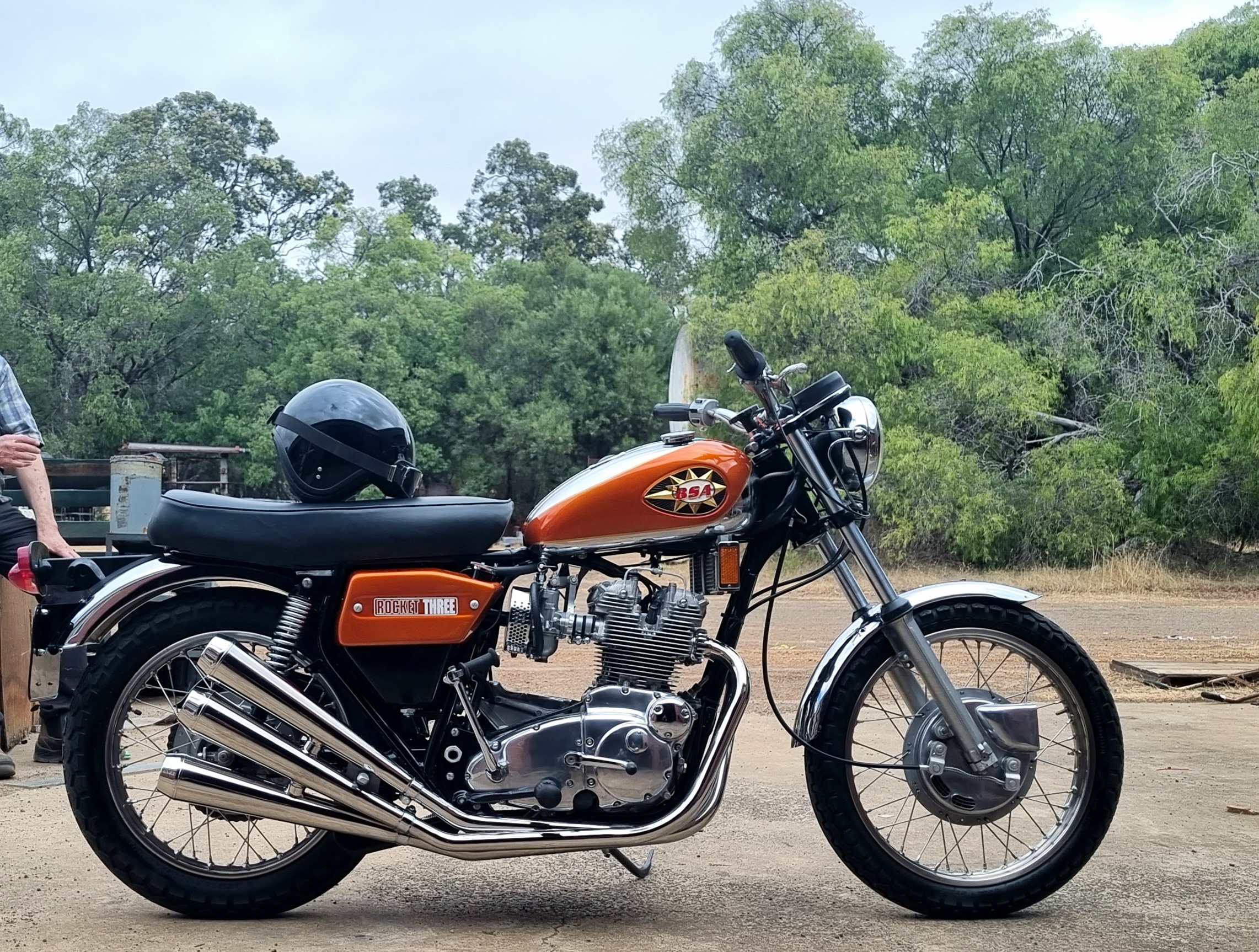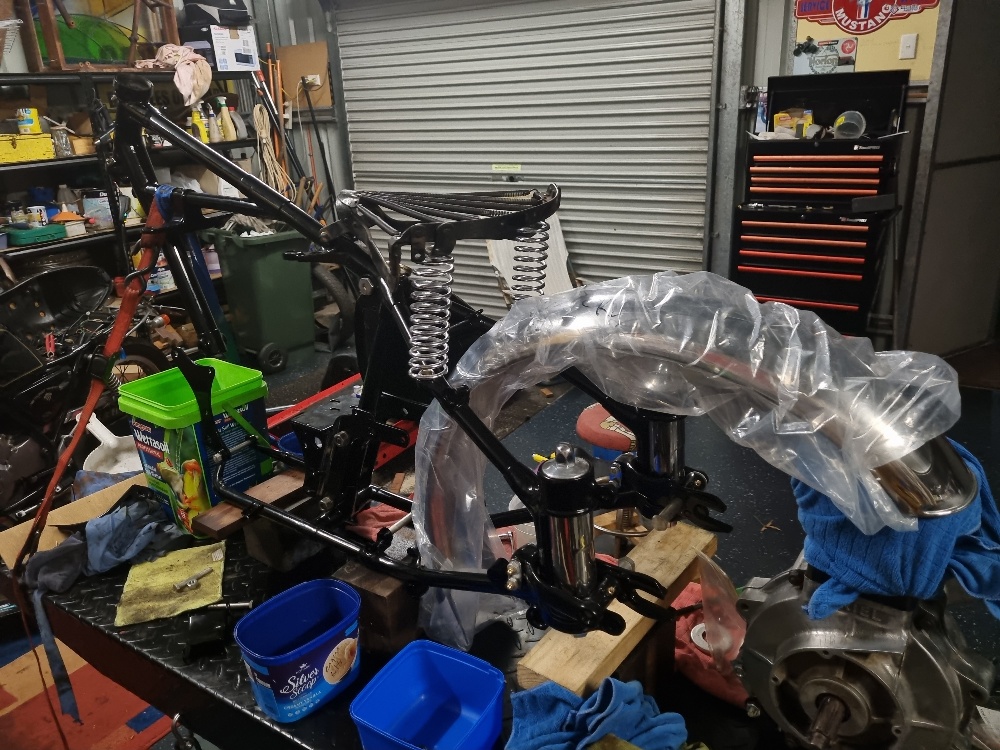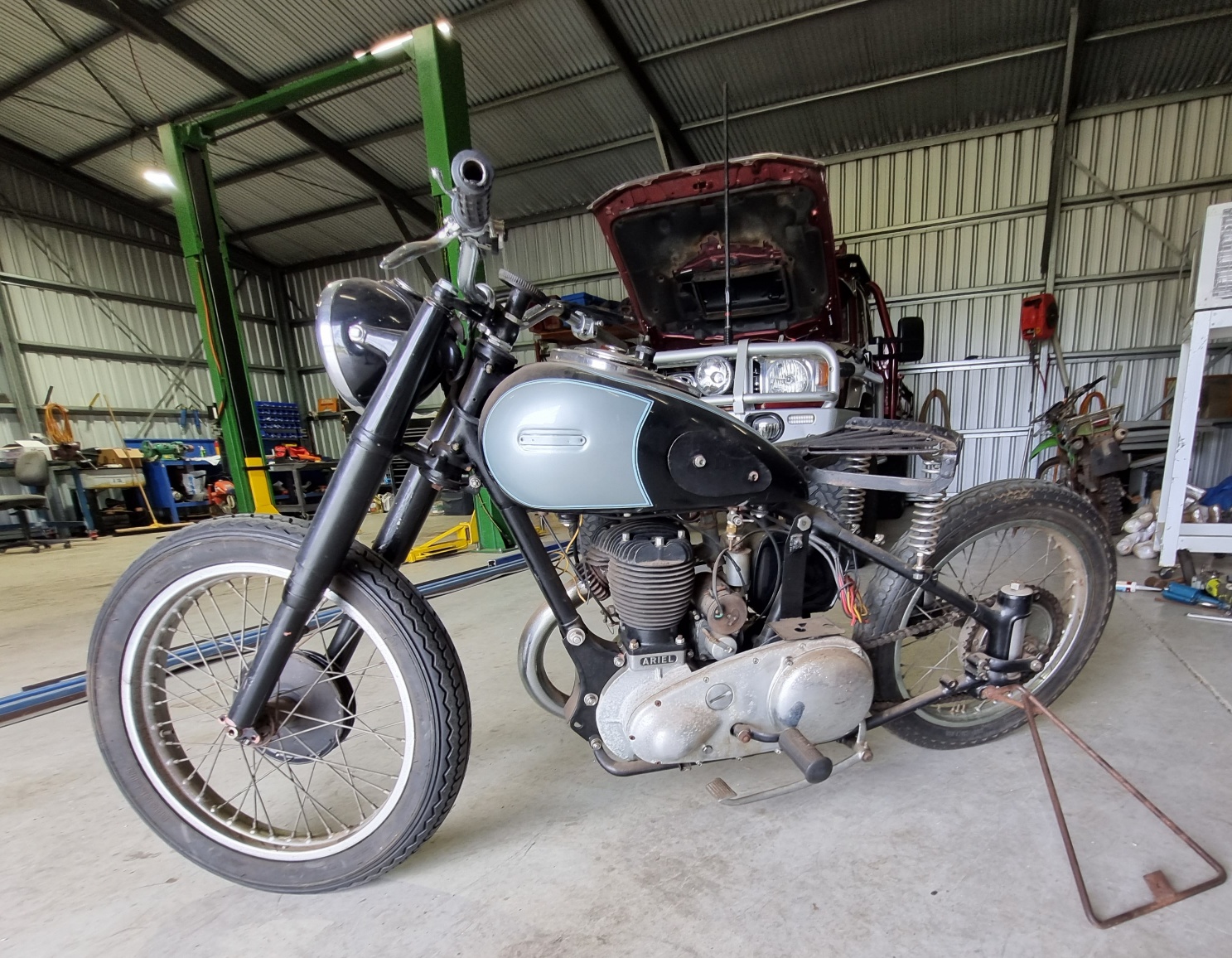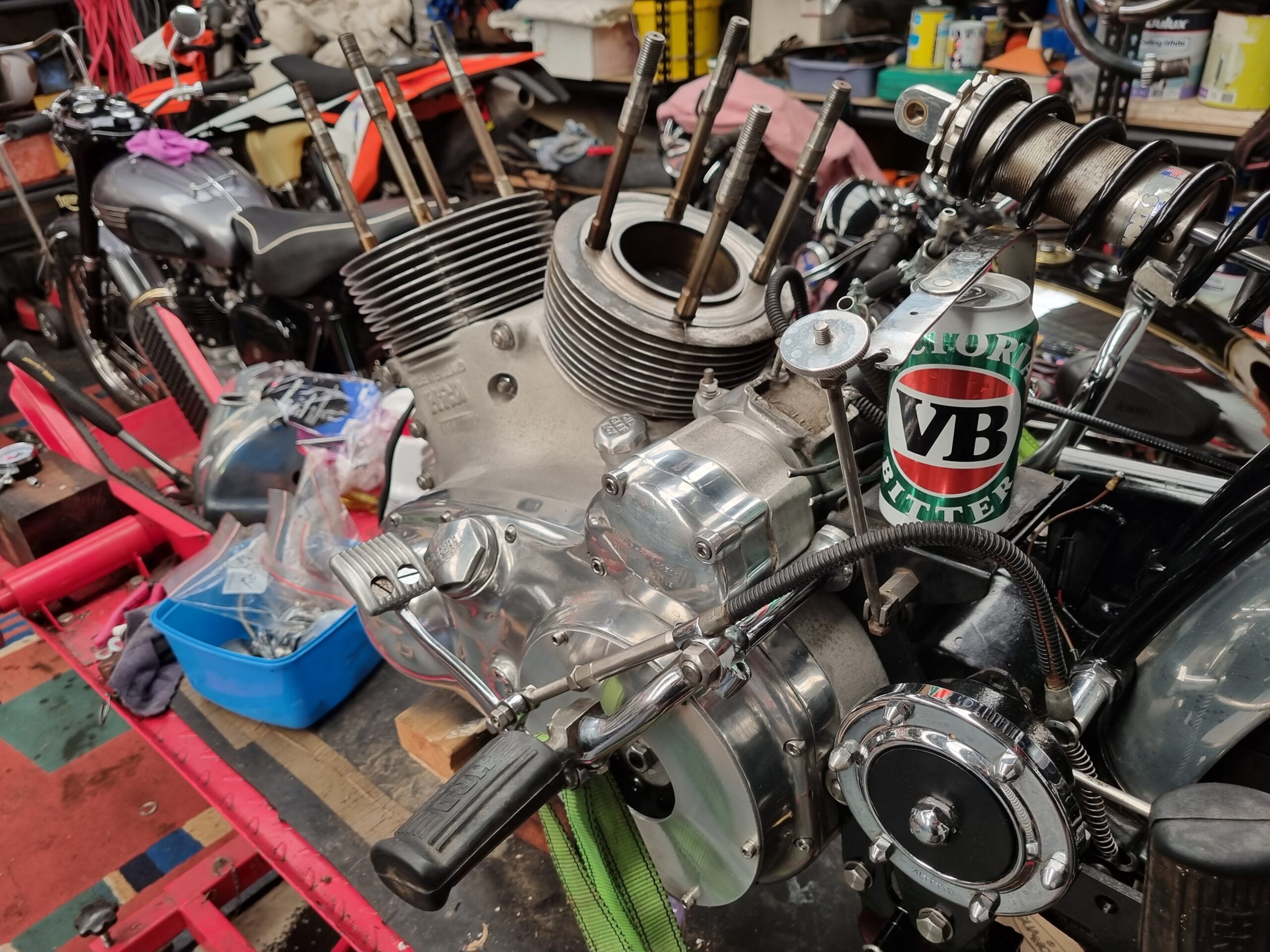In continuing the Perkolilli, Red Dust Revival series (Green T), we are now changing from four wheels to two. Green T has been moved on and Perkolilli will now be a two-wheels only affair.
Lake Perkolilli is roughly 40 kilometres North East of Kalgoorlie in, what the International press refer to as: the Australian Outback. The Red Dust Revival is a commemorative event for pre-World War II cars and motorcycles. For those who missed my previous reports, I have again touched on the history of motor-racing at Perko below.
Lake Perkolilli is a flat, vast area some four or five kilometres in circumference, where vegetation has given way to hard-packed salt and clay. It has a colourful racing history dating back to dawn of the automobile. By 1914 there were evidently enough cars and motorcycles in the Eastern Goldfields to form some loose-knit motor racing and Lake Perkolilli was adopted as Western Australia’s first motor racing circuit. In the following few years Perko moved from an isolated, desolate, wasteland to become known as the “Brooklands of the West.” Eventually, tiered grandstands would be built on the location to accommodate the large crowds that would gather to watch the motor racing spectacle. These days there is no hint of the grandstands save for the odd rusty nail that has to be dug from flat tyres (ask me how I know).
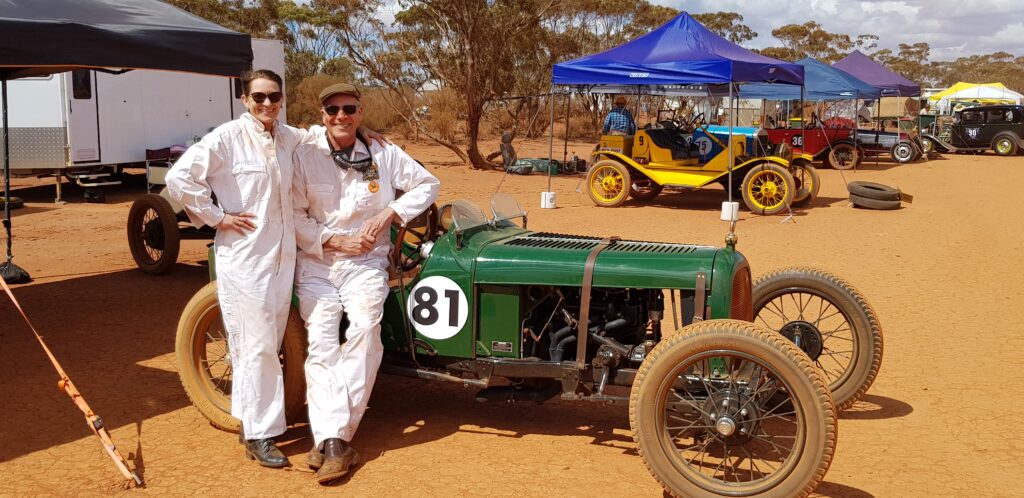
Green T has been moved on and we’re going back to Perko with two-wheels next time
Motor racing at Perko was brought to a halt with the outbreak of WWII and didn’t quite return, even with the end of hostilities. This is probably due in part to Caversham airfield being opened to motor racing immediately after the war. Once Caversham became the premier motor racing circuit in Western Australia, Perko became the proclivity of Goldfields revheads and daredevils, hosting both official and unofficial races and speed trials but its status as a race track was lost, until 2014. With the centenary of the first motor races at Perkolilli, veteran and classic race cars and motorcycles returned to Perkolilli for the first Red Dust Revival in September 2014.
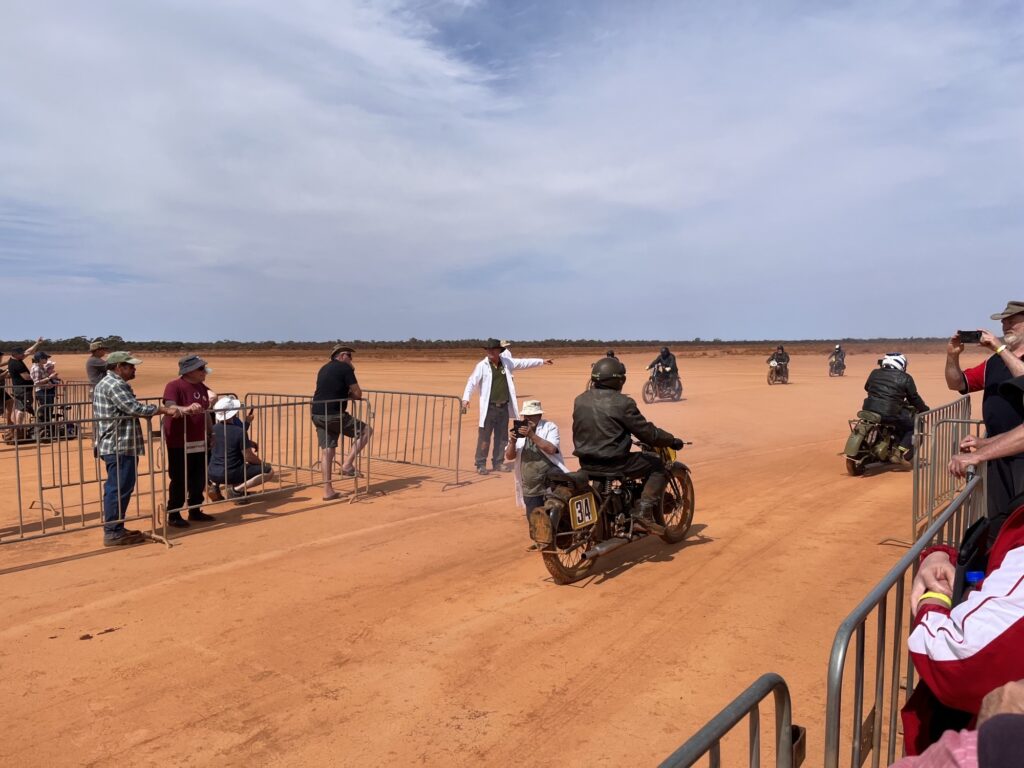
Given the cleanliness of these riders and bikes, I’m guessing this was day one at the Perko Red Dust Revival. Nothing stays clean for long.
Not sure exactly what to expect, I resolved to take my 1914 Ford Model T Roadster to Kalgoorlie for a look and see. The event was rained-out but not before I got a good taste of red dust during practice. I have previously been a long-term resident of Kalgoorlie (twice) and a member of the Kalgoorlie Motorcycle Club during the late eighties when I used to suffer the punishment of 500cc, 2-stroke motocrossers we campaigned through the ‘Outback.’ I still have a great affinity for area and the motor sports it generated so it wasn’t long before I was hooked.
In 2019 my wife and I returned to the Perko with our Roadster and again in 2022 with a dedicated Ford T racing car. The problem with veteran racing cars is they are made for drivers from 100 years ago who evidently were of smaller stature than my 6’ 3”. I did manage to squeeze myself into the little race car, dubbed Green T, and I managed many hot laps during race week but when I received an offer for the car that I couldn’t refuse I moved it on with the intention to return to Perko with a larger, V-eight car.
Building a V-eight race car that could be registered and remain faithful to the pre-WW2 requirements of the Red Dust Revival was proving too hard and I quit the project. I have previously documented my troubles with the Department of Transport licensing a slightly modified 1966 Mustang and simply don’t have the energy to take them on all over again – the experience still leaves a bitter taste in my mouth. I sold off the old Flathead V8 that I had retained for the build. I have decided instead to go back to Perko on two wheels.
Red Dust Revival 2022 included 38 motorcycles with over a dozen from the Indian Harley Club. Our members were simply having too much fun and, interestingly, Michael Rock was recording the fastest times of all the bikes on his ’35 BSA 500. Rocky was actually lapping at faster times than the V-twin 1000cc machines out there, and a good deal faster than my Model T.
I have secured a 1939 Ariel 600 and spare 500 engine. The 600 is a side-valve whereas the 500 is the more sportier overhead-valve. Both engines will get a run in the bike from time to time but the 500 will be called upon for Perko duties. All competition machines, bikes and cars, at Perko need to be pre-war so, those with a modicum of history will be aware, this just scrapes in to pre-war so it’s Perko-eligible.
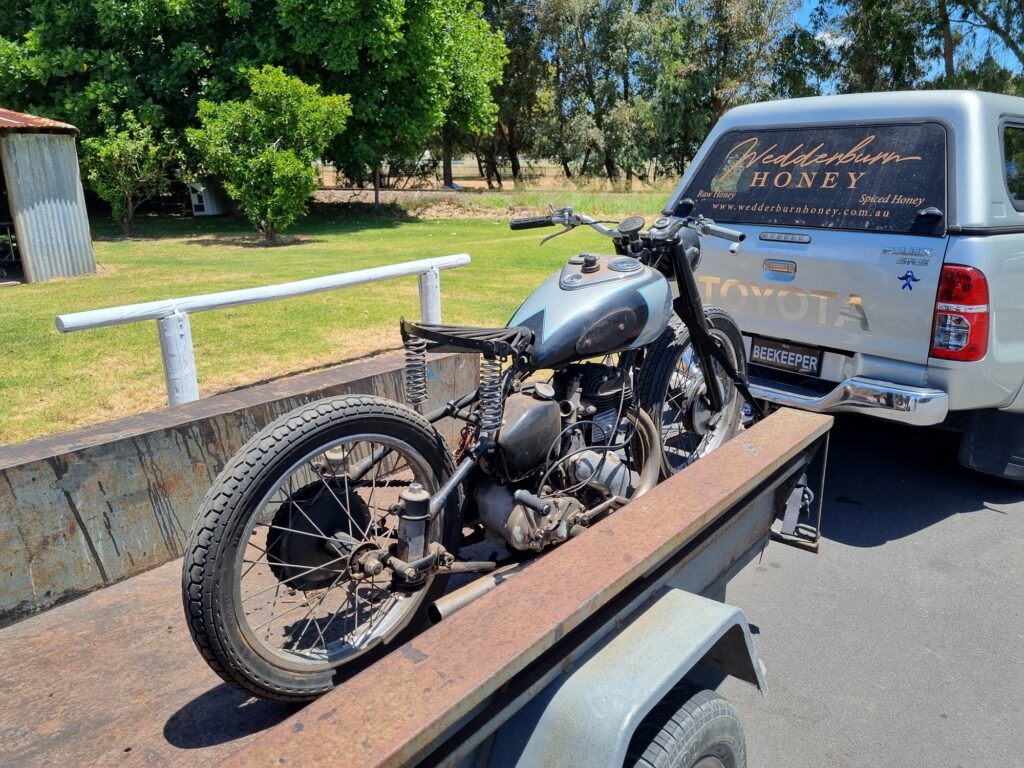
Ariel on the move. The deal has been done and the 600cc Ariel VB is heading to its new home.
It’s a long road to Perko, both literally and metaphorically and my Pindan* Special is far from finished. In fact, it’s barely started, so this seems like an ideal time to chronicle the build.
Although the motorcycle I obtained looked a bit shabby, it bears all the evidence of having been through a sympathetic restoration that was never quite finished. I’m guessing the bike was pushed around various sheds, copping a knock here and there, parked up long enough for rust and corrosion to take hold and paint to begin to flake but the beauty of this machine was below the skin.
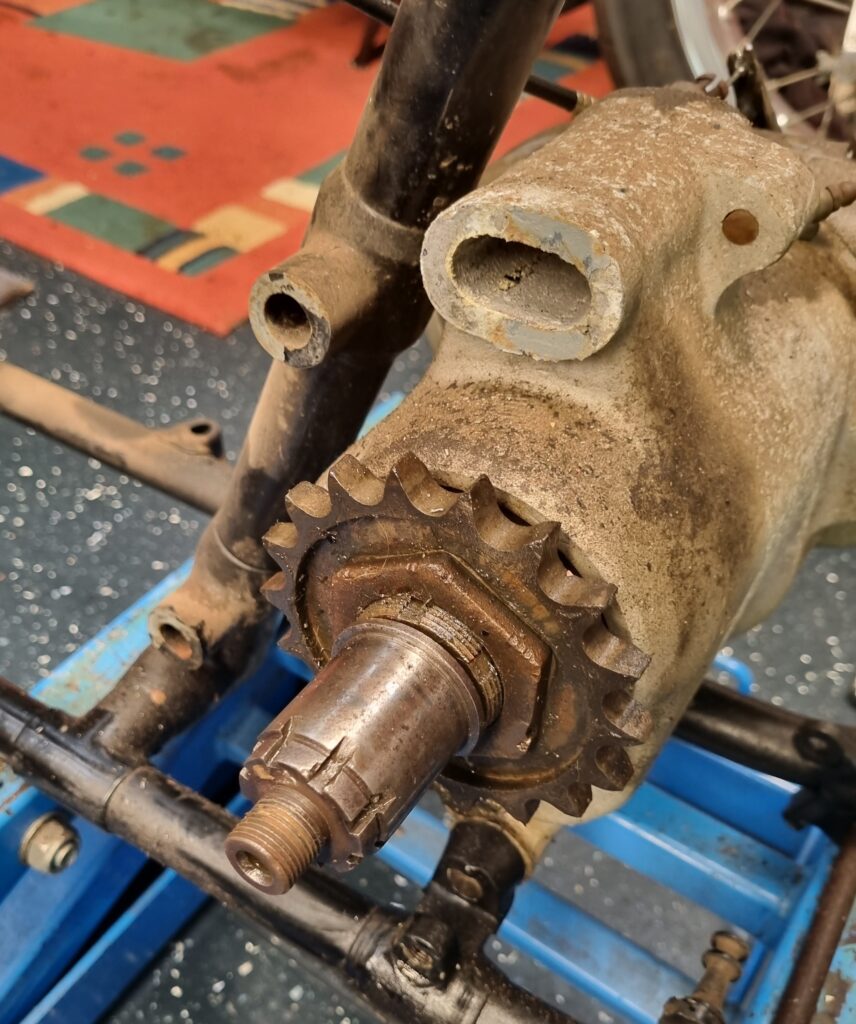
The Burman gearbox is full of clean oil and is probably okay however I will be looking inside to ensure the internals are fine.
Popping the head of the bike shows the engine hasn’t been started since it was last rebuilt there is no carbon in the combustion chamber. Down below, there is no sludge, just new, clean oil preserving the freshly turned surfaces. The person I purchased the bike and spares from is unable to say when or who was in there last but a tell-tale sign under the dash panel of the fuel tank hints at it being painted in 1989. The frame, tins and other painted parts are straight and rust-free but have a few scratches compatible more with storage than use. All in all, it’s a small win.
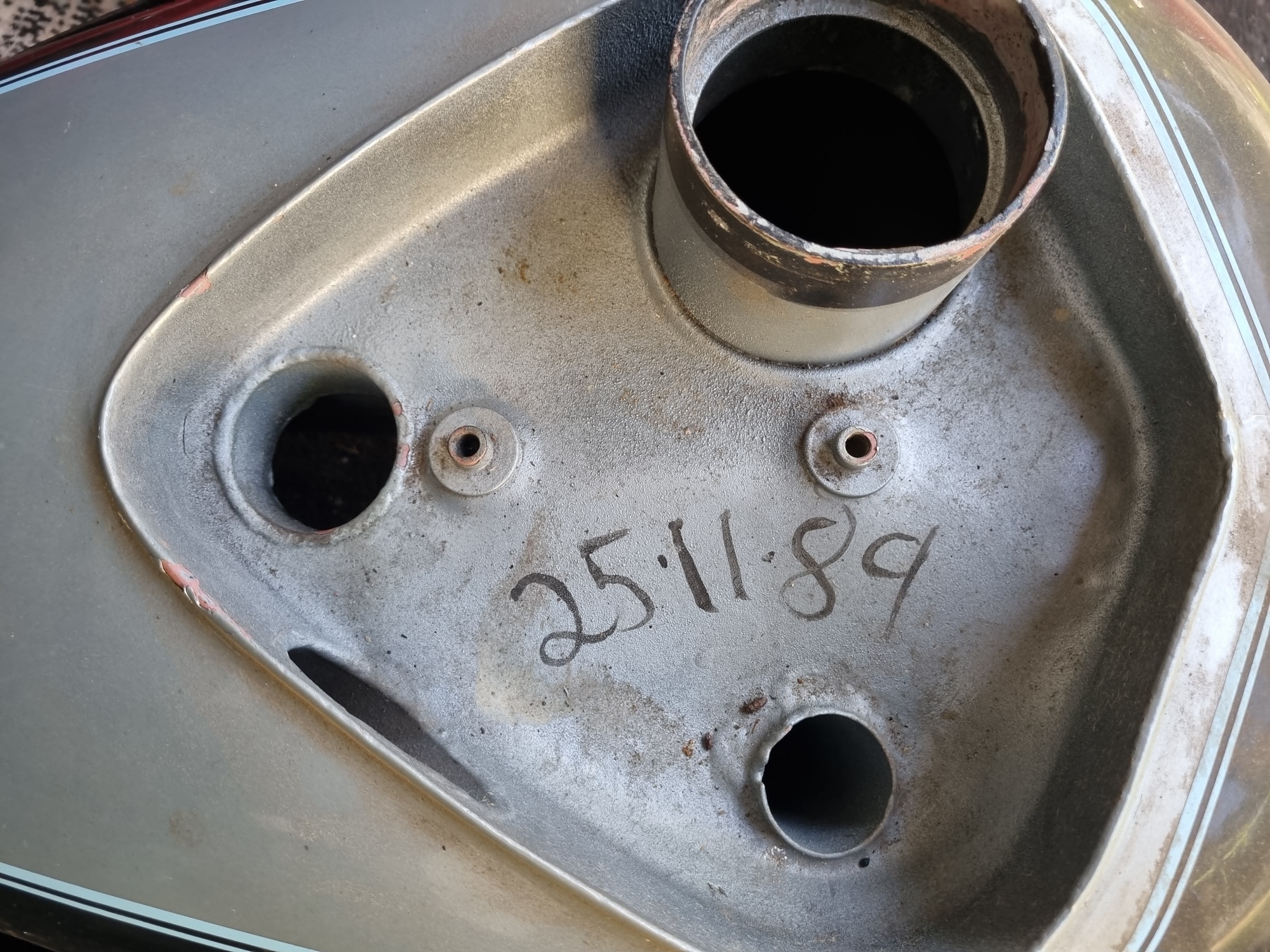
This, to me, indicates the fuel tank was painted in 1989. Evidently, the restoration was never finished and the tank has been left to cop the blows and wows of storage.
The plan from here is to build a road-going Ariel single that conforms with both IHC and 404 tenets of road-going originality, but, with a stock of bits and pieces that can be swapped out when we go racing – just as they did back in the day at Perko.
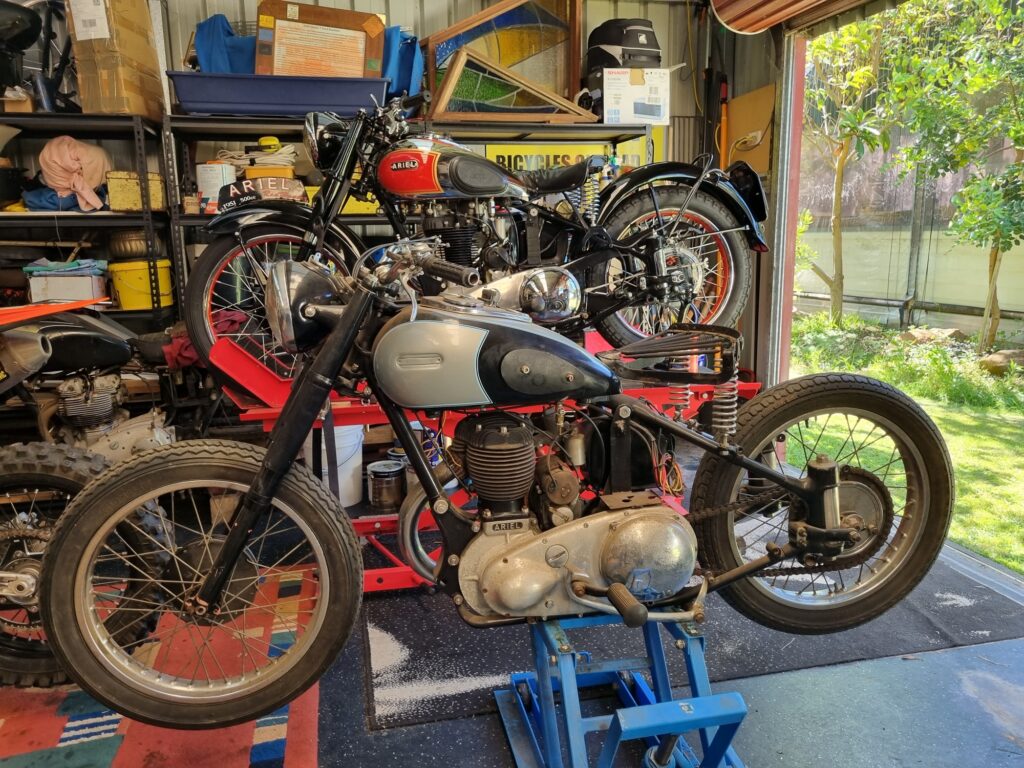
Back home the old VB is in good company with it’s younger, Red Hunter, sibling. Those familiar with the marque will recognise the non-standard telescopic forks and the (standard) Anstee-link, plunger rear end. In relation to the first point, I have secured an original girder fork contemporaneous with the bike. In relation to the second,1939 was the first year for an optional sprung rear end.
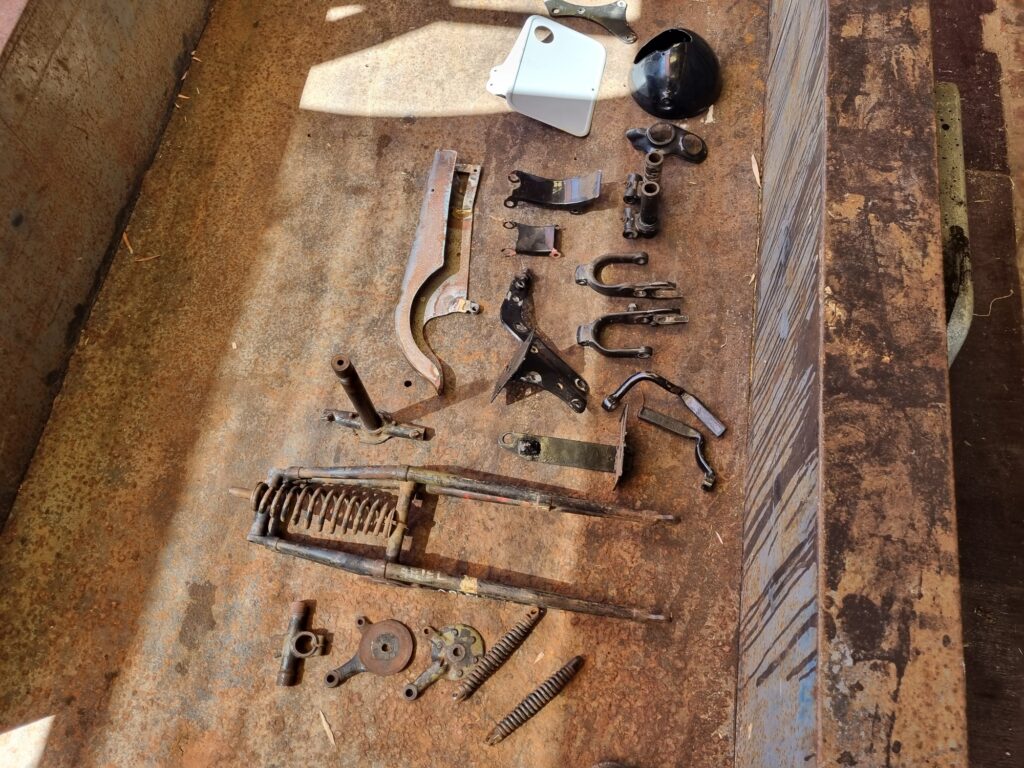
The girder and other bits and pieces have been gathered together in readiness for painting.
*Pindan is a Yamatji word for red-dirt.
